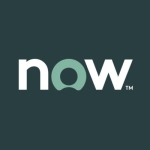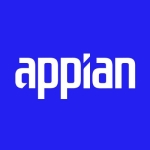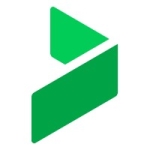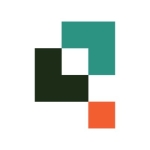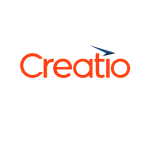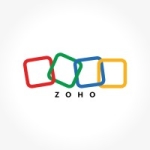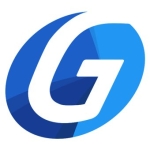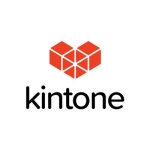What is our primary use case?
Our first use case for Zudy VINYL was actually to implement and automate workflows for some complex tasks with a lot of handoffs. One example was, as we onboarded a great number of employees at the late end of 2019 and early 2020, we had about 100 people who needed to be onboarded in a short timeframe. There were a lot of handoffs, people involved, and steps which could go off the rails if we didn't have some clear structure for how the handoffs would work. Using the Zudy VINYL platform, we were able to automate that workflow and make sure that everybody was on task and on point. We started to expand additional workflows from there, then we started getting into more custom applications for niche solutions and individual business problems that people were bringing to IT to solve.
How has it helped my organization?
One of the applications that we developed, and was completely custom, with the Zudy VINYL platform, was an integrated hub and integrated portal for our sales force. So, we have about 300 people as customers. We have essentially built a single point of entry for information, various applications, and subapplications that are also built on VINYL. But, the entire sales force can go in and have customized information, specific to the sales force and sometimes specific to them, right at their interface. Some of the things that they can do is receive specific communications that are categorized across different areas of marketing. They have access to custom applications, such as a digital detailing aid, that we used when we were still trying to stand up our CRM in the wake of the COVID transition, where they could access materials and detailing aids that they would put in front of their customers. They are also able to update some of their employee information, which integrates with our ADP system, as well as access videos and presentations, which different areas of marketing put out for them.
The integration is a huge accelerator into enabling new business processes. As a small company, we have a few different systems that otherwise couldn't talk to each other. We recognize, from an IT perspective, the value that data and change in status of certain data in one area could influence the ability to take action in another. With these integration points, we are able to essentially create that communication from one system to another, letting system B know that something has been completed or is ready in system A. That allows our users to know that they are ready to complete a task. Without that, we would be relying on a lot of manual communication. We would be relying on individuals sending emails, saying, "Hey, by the way, this is ready in system A." Now, we have the system recognizing it and shooting that email off automatically, with all the instructions necessary.
I like to think that the Zudy VINYL product is the perfect middleware for the different applications that we have scattered around our infrastructure. What I like about it is that we know how to use it to get one system to talk to another or pull information from multiple systems into one view for dashboarding, metrics, or reporting. Its ability to integrate with those various systems, and fill the white space between those systems where business users have needs, is really what has made it a differentiator in our organization.
We are using Zudy VINYL to fill white space between some of the existing business processes happening in systems that are already standing up. So, to say, "Is it running? Is it fully running back-end processes in the office?" We're not using it for that purpose, but the overall capability of the tool has certainly demonstrated it. Whereas, if we really wanted to jack up the amount we're putting in there, the sky is really the limit on what we could actually pull into VINYL and processes.
What is most valuable?
The most valuable feature within Zudy VINYL is just the ability to quickly, without having to worry about digging into code, put together user interfaces that match the business requirements and the user's expectation to do rapid deployment. A couple of the things that we really put to work in a lot of our applications are the use of structured communication and notification that is triggered by business events. So, when an activity is completed in the system, Zudy VINYL is able to integrate with our address book and Outlook to send the appropriate notices and deliverables to the people who need to use them next. Then, they can pick the task up without having to go back into the system to know that there is something on their plate.
Zudy is really easy to use. I am a non-developer myself, and I'm able to hang out in the conversations with our technical folks and Zudy consultants who drive a lot of the work development for us. The no-code/low-code platform is extremely intuitive. Our users are able to visualize solutioning. When we are working through an app, they are able to picture a way something would work. They are familiar with the ways Zudy might help them engage in the information that they want to work with. It has been a very easy conversation and easy development process, both within IT and with business customers.
The speed of development for custom applications has been incredibly rapid and really exceeded, not only IT's expectations, but the business users as well. Often, when we are bringing up or conceptualizing a new idea, two or three business days later, we have a conceptual prototype that we are able to put in front of our business users and start building from there. Many of our applications have only taken one to two weeks to stand up in a test environment and then have them deployed to production within about a week after that.
Zudy VINYL integrates really well through APIs and other data integrators. We have worked with about four or five other different systems that we have tied Zudy to, including Viva, ADP, and Oracle. I have yet to bring up a system where we have an idea for an interface, or an exchange of information, where we haven't figured out some way to make that connection, either through a direct API or by using a creative-like FTP process where we drop files someplace and have another system pick them up.
One of the features that they were able to add as part of a business need on the fly was the integration of DocuSign as well as an integration of an iPad touch signature pad. These were plugins that they were able to take, integrate with the tool as they built it, and we were able to create some cool stuff, like attestation forms or sign-off forms. Whereas, if we wanted to capture an official DocuSign signature, or just a scanned signature, we were able to take those tools, integrate them with a PDF presenter, and push electronic versions of forms out to people who they could then sign or acknowledge them right on their iPads. The system would save that as a final document that we could then archive. This wasn't an out-of-the-box feature that Zudy had, but by using the platform and pulling in other applications the way that we envisioned using them, we were able to create things that met our business needs.
What needs improvement?
During the initial rollout, the text editor wasn't 100% what we were looking for, but we were able to get the job done. After some discussions and finding ways to use different plugins during the short term, Zudy actually came back a few months later and said that they have integrated a standard product into their text editing that checked all the boxes for us. This has made it a lot easier to not only support the product, but to use it for new business ideas.
For how long have I used the solution?
We've been using Zudy VINYL for a good two years. We started in the commercial space, but we have started to use Zudy VINYL across both our R&D and commercial business areas.
What do I think about the stability of the solution?
We have found the stability of the VINYL platform to be extremely reliable. We have had some point outages at times, where a plugin or something that interfaces with the VINYL platform went out on its own. Then, we experience that the employee portal or the app is down. After investigating, we found that the VINYL app was functioning perfectly. The challenges came into play when an integrated piece went out. So, I have no examples when the VINYL platform itself was out and causing business problems for us.
What do I think about the scalability of the solution?
What scalability has meant for the field is that when we were shut down after the COVID pandemic hit, for example, we had to pivot very quickly to give our sales force a way to engage HCPs virtually when they were initially anticipating being out in the field and live with them. So, we were able to stand up products which helped them achieve that objective. We had short-term fixes for some of the other business challenges, but the most mission-critical one was to get out there and start selling and meeting our HCPs. Once we delivered that core capability, we were able to circle back, look at some of the secondary requirements, and start to deliver those.
We actually built new features and built them right into the tools that the sales force was already used to accessing. They simply had either broader menus, more selections, or more options when they went in, but they never lost the core functionality. That was huge for us because we were able to get people out to the field quickly. Then, we took the things that were not critical paths and delivered them at the time that was right for them, instead of trying to wait until everything was ready, then deliver it as a single waterfall approach.
We have implemented close to 40 applications that have ranged from a huge multi-user system to simple business accelerators that help a small team do something in a new or more effective way. I don't see a real end to that as we grow and continue to evolve our processes.
How are customer service and support?
Technical support has been great. I tend to work primarily with one or two consultants who are my interface to the team. Whenever we have issues that need to be investigated, they are interfacing on my behalf. We usually get answers within hours or within a business day or two.
Zudy continuously looks for feedback and takes learnings from the development that we are putting in place to figure out how to make the product better. Over the course of the relationship, I have seen two releases to a new version as well as some hotfixes that have been put in place specifically because of things that we found while we were developing. One example of that is a text editing feature they have. So, we have taken a lot of folks out of email and Outlook for their communications, giving them an interface in Zudy's VINYL platform to actually do their authoring, formatting, and things like that. While those messages ultimately push back out to Outlook to reach some of the users, the users don't have to write it in one place, then port it over to another.
There is nothing that I have really felt has been completely lacking from a Zudy perspective. Every time I have gone to the Zudy team and asked them for a read on being able to implement a certain feature or do something a certain way, there has always been a way to do it. That might be the limitation of our vision, but it seems to me that the tool and, in particular, the staff at Zudy, really understand how to use the tool creatively to address just about any business problem that I've had brought their way.
How was the initial setup?
It took about three months to stand up all the features that we wanted in the sales employee portal. The first few features were developed in a matter of weeks, but as we identified different business requirements that we realized we wanted to enable for the field to use, we were able to quickly identify the requirements, build on the module, and tack it into the delivery workflow. So, the overall delivery of the portal, while stretching out over a course of several weeks, was actually a stack of different, smaller rollouts that each only took three to five weeks to develop.
What was our ROI?
If I had to think about it across the 40 applications, I am not even sure that I can give an order of magnitude. There is not only time and effort savings, but the ability to do something where we simply just couldn't do it. With COVID throwing everyone for a curve ball last March, there were simply things we weren't able to do. We didn't know how to visualize them. We had to stand up a commercial solution to address our sales force's needs. It would have taken more time than we would have wished in order to get our sales force out and selling. So, in addition to the time savings, the ability to enable people with an effective solution where there was really no alternative. Doing this quickly and effectively has really been the key value-add for my company using Zudy.
Which other solutions did I evaluate?
The Zudy VINYL platform is the primary solution that we evaluated for workflow automation. Once we brought the system and platform in-house, we found that we were able to use it for additional business needs where we might have otherwise gone out to market to look at commercial off-the-shelf systems for particular business needs that are not workflow oriented.
I haven't gone out to the market to look at a lot of competitors, but I can't imagine that any of them are going to blow my expectations away the way that the VINYL platform has.
What other advice do I have?
The advice that I would give to someone whose thinking of implementing Zudy VINYL is, "Absolutely give it a really strong look. Speak to the Zudy staff about your particular business cases." I think that if you are using Excel spreadsheets or workflows that are primarily dependent on human manual communication, this solution will address so many of those needs. It is definitely a great application that we have brought in. I continue to find new uses for it on almost a daily basis.
The most recent version of Zudy Vinyl certainly brought a bunch of new things to the table. I think one of them was the text editor. I think that the general interface for Zudy, when you first come into the product to look for the different apps you've developed, is a little bit more intuitive and organized. We bypassed a lot of that with our employee portal, but when we do have to go out to that interface, it is easy to navigate.
On a scale of one to 10, I'm going to give them a 10 for what I need them to do. When I think about not just VINYL but Zudy as a service provider and partner, they are really checking all the boxes for us in terms of the human capital they bring to the table, the flexibility of the platform, and creativity. It is really doing everything for us that we would want it to do right now.
Disclosure: PeerSpot contacted the reviewer to collect the review and to validate authenticity. The reviewer was referred by the vendor, but the review is not subject to editing or approval by the vendor.

